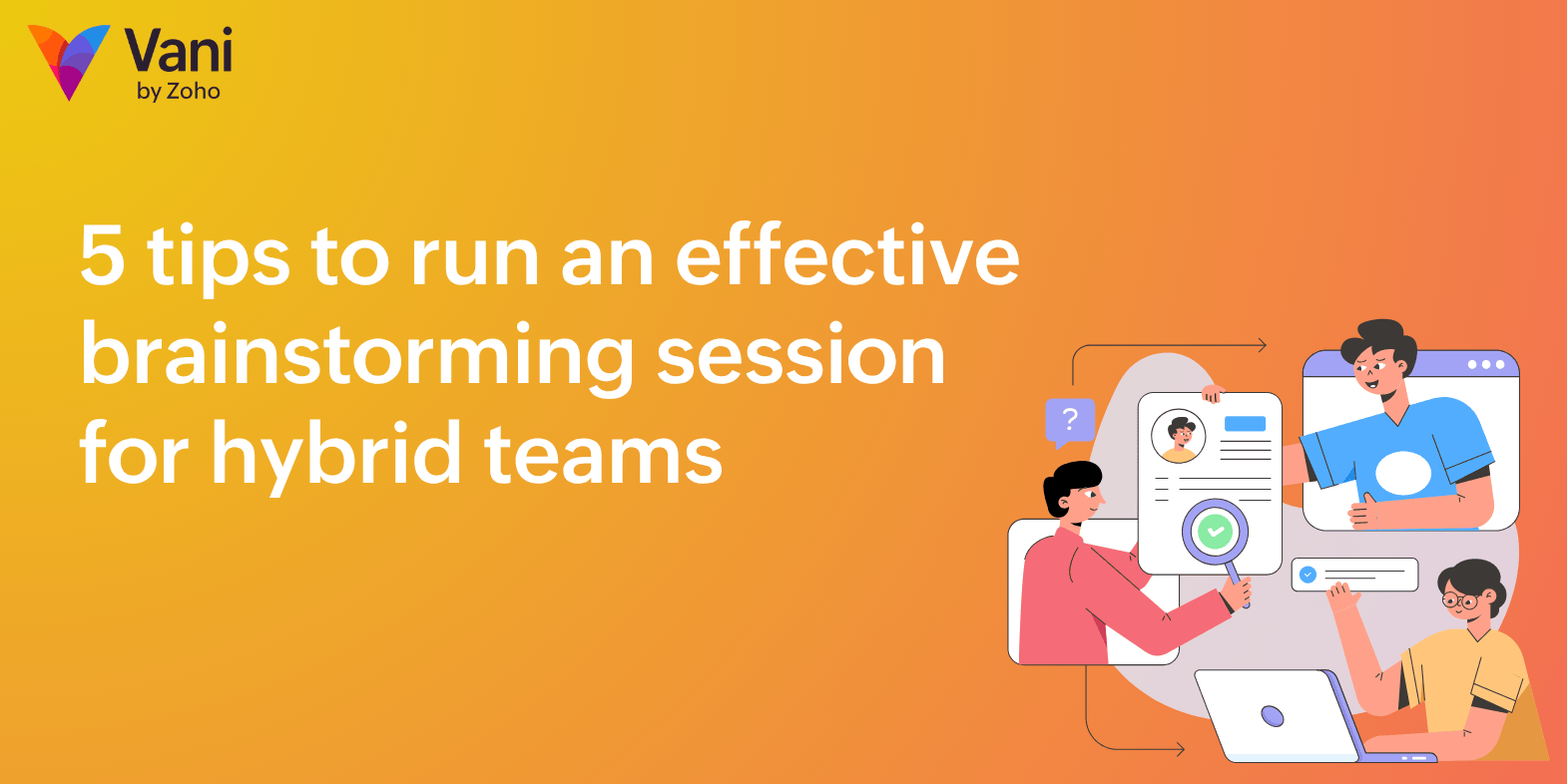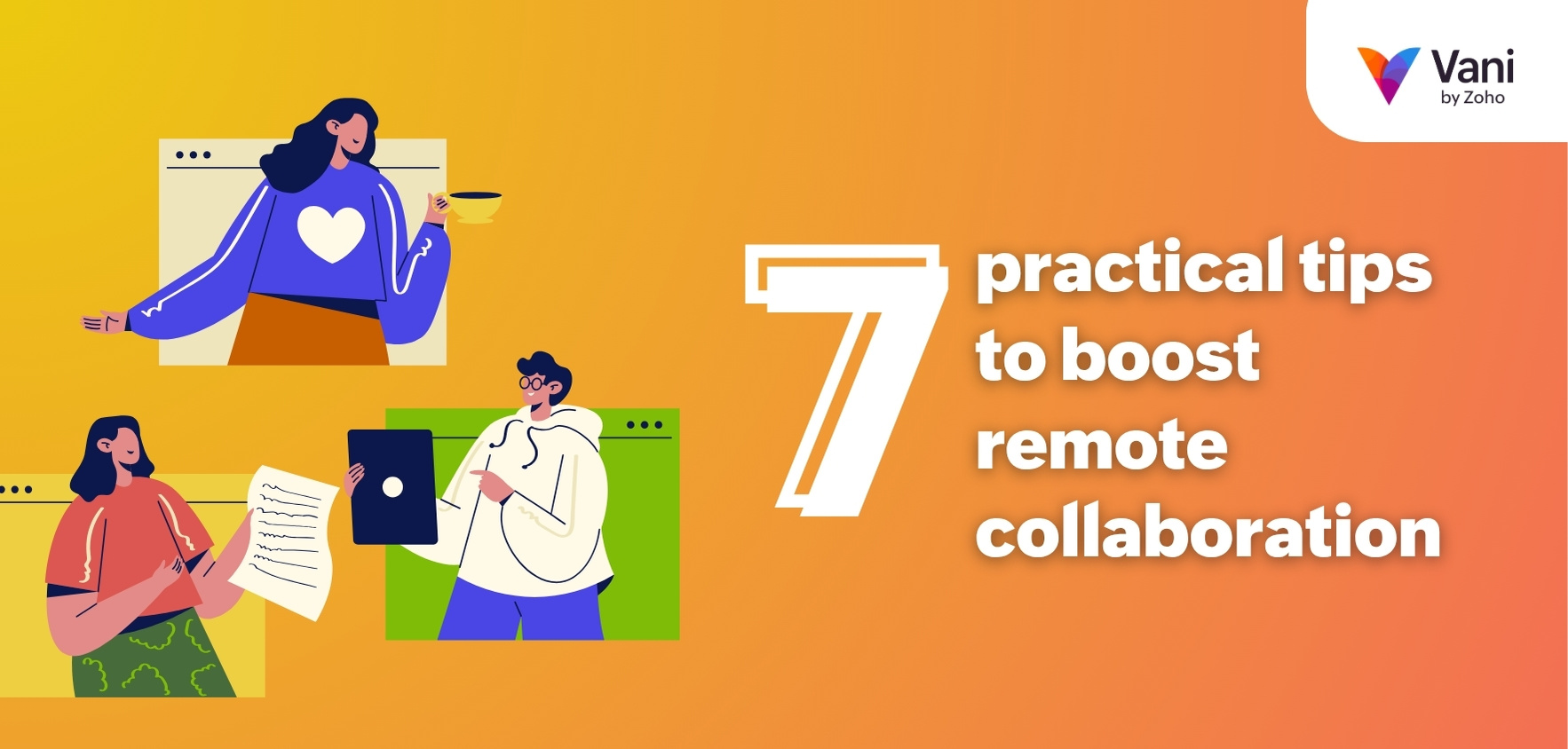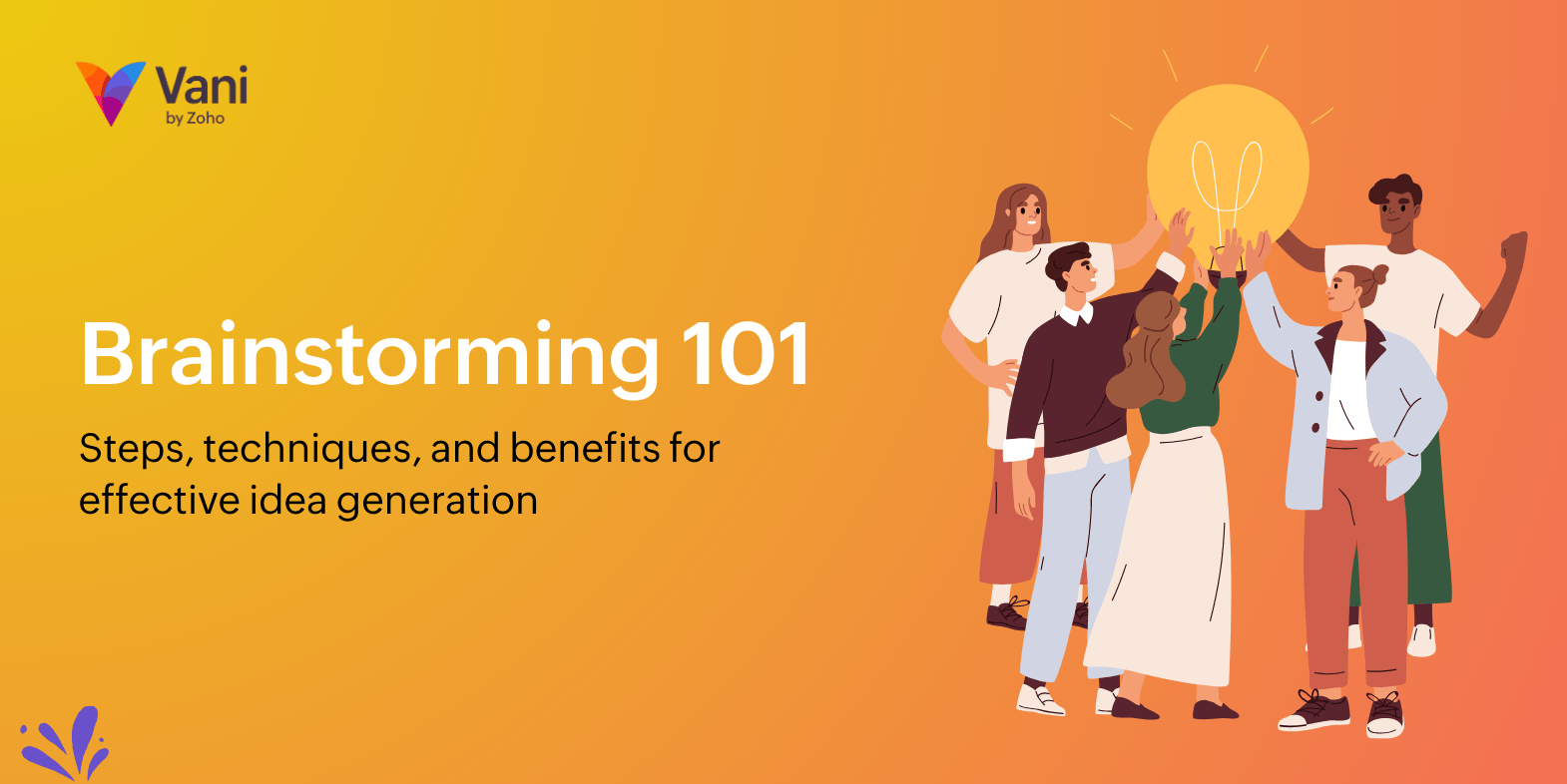- HOME
- Work culture
- Visual collaboration: The smarter way teams think, collaborate, and innovate
Visual collaboration: The smarter way teams think, collaborate, and innovate
- Last Updated : October 21, 2025
- 51 Views
- 6 Min Read
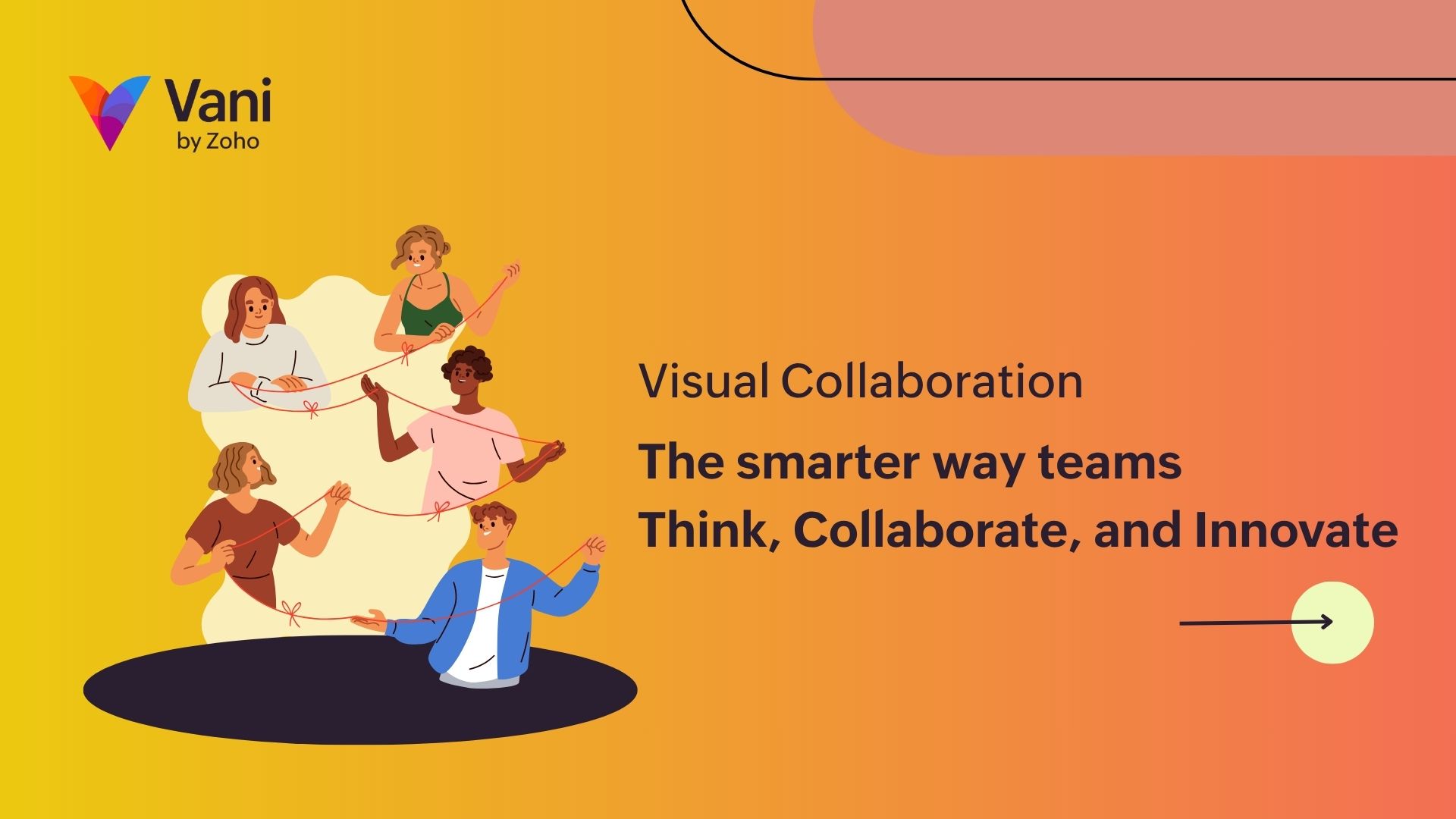
Teams today are connected across regions and time zones, and equipped with everything from chat apps to project trackers. On paper, we're set up for seamless collaboration. But in reality? It still feels scattered.
Endless email chains, disjointed chat threads, and back-to-back meetings continue to dominate. They slow things down, make decision-making harder, and often let great ideas fall through the cracks.
So what's missing? It's not more tools—it's a better way to work together. Think of a filmmaker trying to describe a scene—the lighting, the mood—but without a storyboard. It's hard for others to grasp their vision because while words can explain, our brains are wired to understand visuals instantly—processing images in as little as 13 milliseconds.
That's why visual collaboration is so vital in helping teams think, plan, and build together on a shared visual board. Whether they're mapping out a film set or sketching a product roadmap, working visually brings clarity, cuts through confusion, and makes collaboration faster, smarter, and more aligned.
What is visual collaboration?
Visual collaboration involves working together in a shared visual space. Think of digital whiteboards, sticky notes, mind maps, diagrams, flowcharts—all the tools that help you think better by seeing the big picture.
Instead of just talking ideas through, teams can visualize them. Imagine mapping a user journey, sketching a new feature, or planning a campaign launch—all while your team collaborates in real time on one canvas. That's the magic of visual collaboration; it brings clarity, speed, and creativity to your everyday work.
Why innovation demands visual thinking?
Innovation isn't just about coming up with good ideas; it's about making those ideas real—and that starts with seeing things clearly. Visual collaboration helps teams turn abstract thoughts into concrete plans by making problems visible, connecting the dots, and breaking down complexity in ways text alone simply can't.
And here's something to think about: The human brain processes visuals 60,000 times faster than text—which means thinking visually isn't just creative, but efficient. So when teams think visually, they work faster and smarter. Innovation thrives when there's both clarity and creativity, and visual collaboration brings both to the table.
Visual collaboration = clarity + creativity
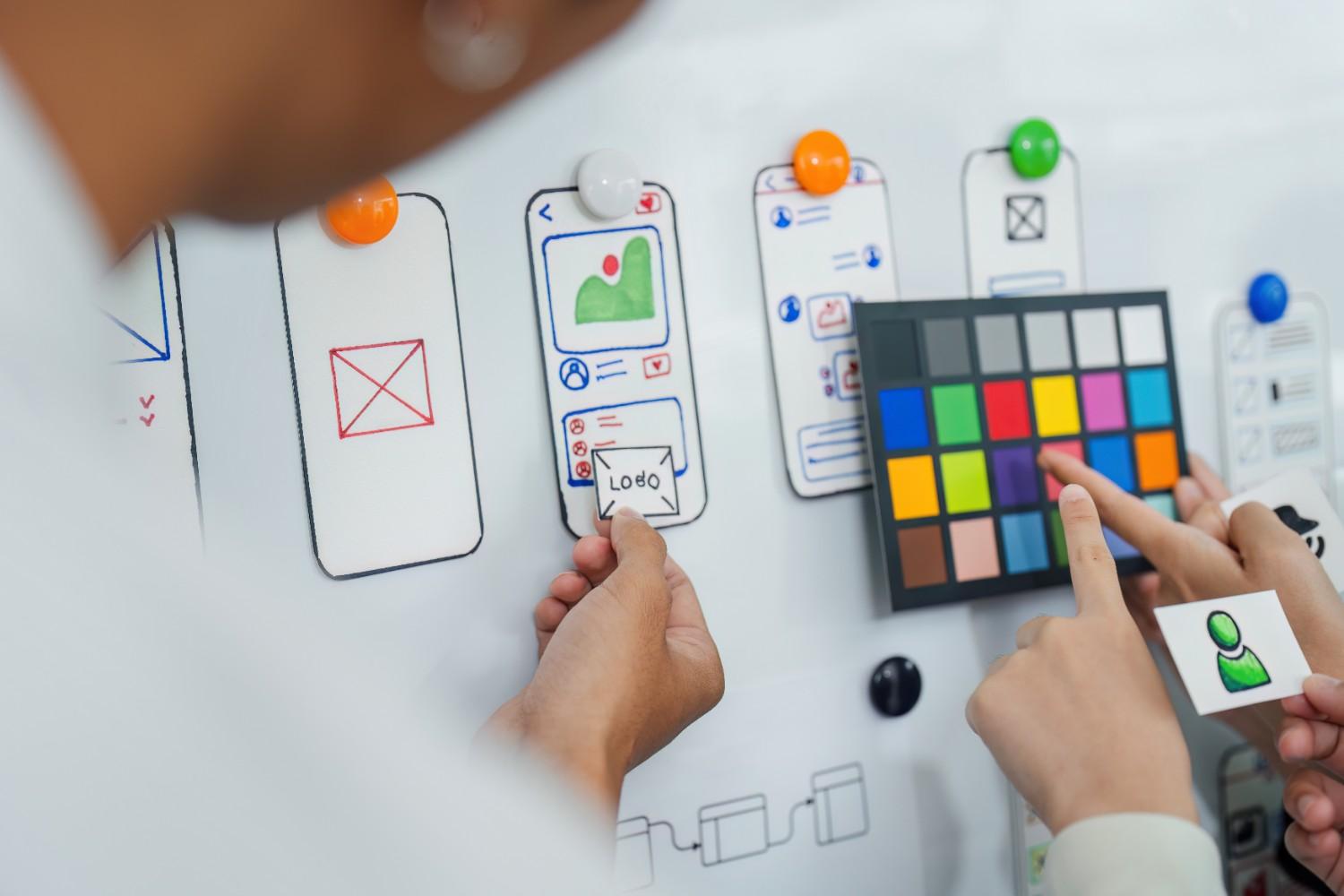
Clarity
Innovation often involves solving complex problems. Visual collaboration helps teams break things down—such when they're mapping a user journey, designing a system, or outlining a strategy. Tools like flowcharts, diagrams, and whiteboards help simplify the complexity so everyone can easily follow along and contribute with confidence.
Creativity
Innovation isn't just logical; it's imaginative. Visuals engage all parts of the brain, creating space for new ideas, sparking new connections, and creative breakthroughs. When ideas are laid out visually, teams can spot patterns, explore alternatives, and build on each other's thoughts in ways that simple discussion can't match. And suddenly, the impossible feels doable.
Bring efficiency to your collaboration
Beyond creativity, visual collaboration can transform productivity. Here's how it brings efficiency to your teamwork:
Visuals cut through complexity. Sticky notes, flow charts, mind maps, and complex structured diagrams explain more clearly and with more context than a five-page document.
Teams align faster when everyone sees the same visual context—no scattered notes or chats and fewer misunderstandings.
There's no more tab overload when you collaborate visually. With a shared visual space, all your docs, slides, and chats lie on one canvas, without any need to hop between screens.
Teams make more progress when they collaborate in real time (e.g., when they leave comments, co-edit, or drop reactions) and avoid the back and forth.
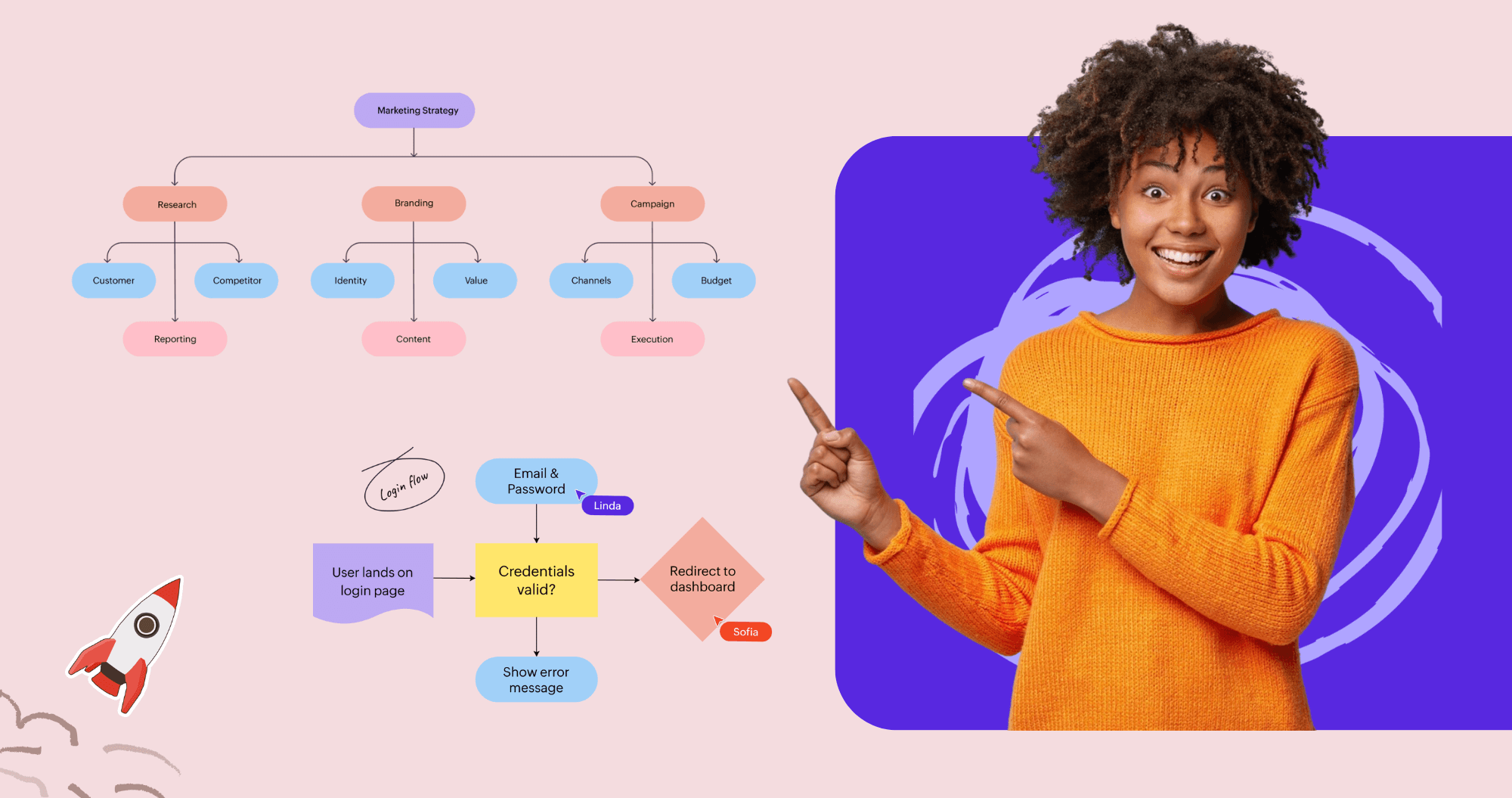
Real-world use cases of visual collaboration
Anyone whose role includes brainstorming, planning, assigning, or executing tasks can use visual collaboration. Here are some real-world scenarios in which teams are already benefiting from it:
- Product teams can map the entire user journey visually, from designing the wireframes and sketches to cross-functional workflows. They can brainstorm features, prioritize them, and plan sprints on a shared visual board so that everyone can understand and stay aligned towards a common goal.
- Marketing teams can benefit from visual collaboration when making launch sequences, assigning responsibilities on a Kanban board, and building campaign mood boards to set a campaign's vibe. They can also brainstorm campaign ideas and align messaging visually long before writing a single piece of content.
- Leadership teams often need to connect the dots across departments. A visual board lets them map swimlanes, define OKRs, and lay out their company's roadmap in a clear, digestible way; no more buried documents or endless slide decks—just one shared visual space where everyone sees their goal ladders up to the overall goal.
- Design teams can create empathy maps to understand user behaviors, needs, and pain points, as well as sketch customer journeys to spot drop-off points, improve user experience with the product, visualize team workflows, and bring storyboards to life—and that's just the beginning.
- Remote and hybrid teams see huge benefits from visual collaboration. Picture a team sketching ideas together during a video call or running asynchronous stand-ups and retrospectives. Feedback flows through comments or emojis—no need for endless email chains or multiple chat bars. Or imagine them starting their day by dropping ideas into a visual shared board without a Zoom call. That's visual collaboration at work—where teams feel engaged, aligned, and productive without team fatigue.
Getting started with visual collaboration
Stage 1: First, start with the right tool. There are plenty of visual collaboration platforms out there, but none quite like Vani. It gives your team a shared, infinite space where everyone can jump in and work together in real time. Whether it's sticky notes, mind maps, flow diagrams, or a built-in video meeting tool, Vani brings all these visual elements into one place. It even includes templates and collaboration kits to help you move faster.
Stage 2: Next, establish your purpose—whether it's for sprint planning, launching a new marketing campaign, or mapping out a customer journey. No matter the goal, start by inviting teammates from your team or another department to the Vani space.
Stage 3: Then start with simple things like brainstorming ideas, planning a sprint plan, mapping user journeys for a feature flow, or planning a marketing campaign with a Kanban board—all visually and all in one place.
Stage 4: To move even quicker, use ready-made templates and kits. Tweak them a little to fit your needs. And don't forget to keep the mood light: Drop an emoji, sketch out a quick idea, or ask a question right on the canvas.
Pro tip: Make visual collaboration a daily habit, even if it's scribbling down a thought or rough idea. The more you use it, the more natural it becomes for your team.
The future of teamwork is visual
Let's face it: Visual collaboration isn't a new way of working; it's a new way of thinking together. Teams are no longer sitting around the same table, sketching ideas on a whiteboard or sticking post-its on a wall. In 2025, over 65% of teams worldwide are working in hybrid environments, and that number is only growing. In reality, staying aligned isn't just a challenge, but a daily puzzle—and that's where visual collaboration comes in.
Visual collaboration is not about replacing words; it's about bringing ideas, structure, and emotion into one shared space, where teams can achieve clarity, shape better strategies, and drive bold decisions. It helps teams move faster, stay connected, and unlock creativity like never before.
So what happens when teamwork becomes visual?
Ideas move faster: No more waiting on long documents, static slides, or drawn-out meetings. When your thoughts are visual, action follows naturally. A teammate drops an idea onto the board, someone builds on it, another maps out the flow—and just like that, things start moving.
Context never gets lost: Ever joined a project mid-way and had no clue what was going on? With visual collaboration, every sticky note, image, diagram, and comment lives on the canvas forever. It's not just documentation—it's a living workspace. So when a new team member joins, they can go with the team's flow.
Meetings now build momentum: Remember all those meetings where people spent more time explaining than doing? Now, imagine saying less and showing more. With a visual board, your team can sketch ideas live, map out workflows, and align instantly.
Visual collaboration isn't just only about brainstorming: It's about creating a culture of experimentation in teams, where ideas are tested in real time and teams can make bold moves and get started quickly without building from scratch every time.
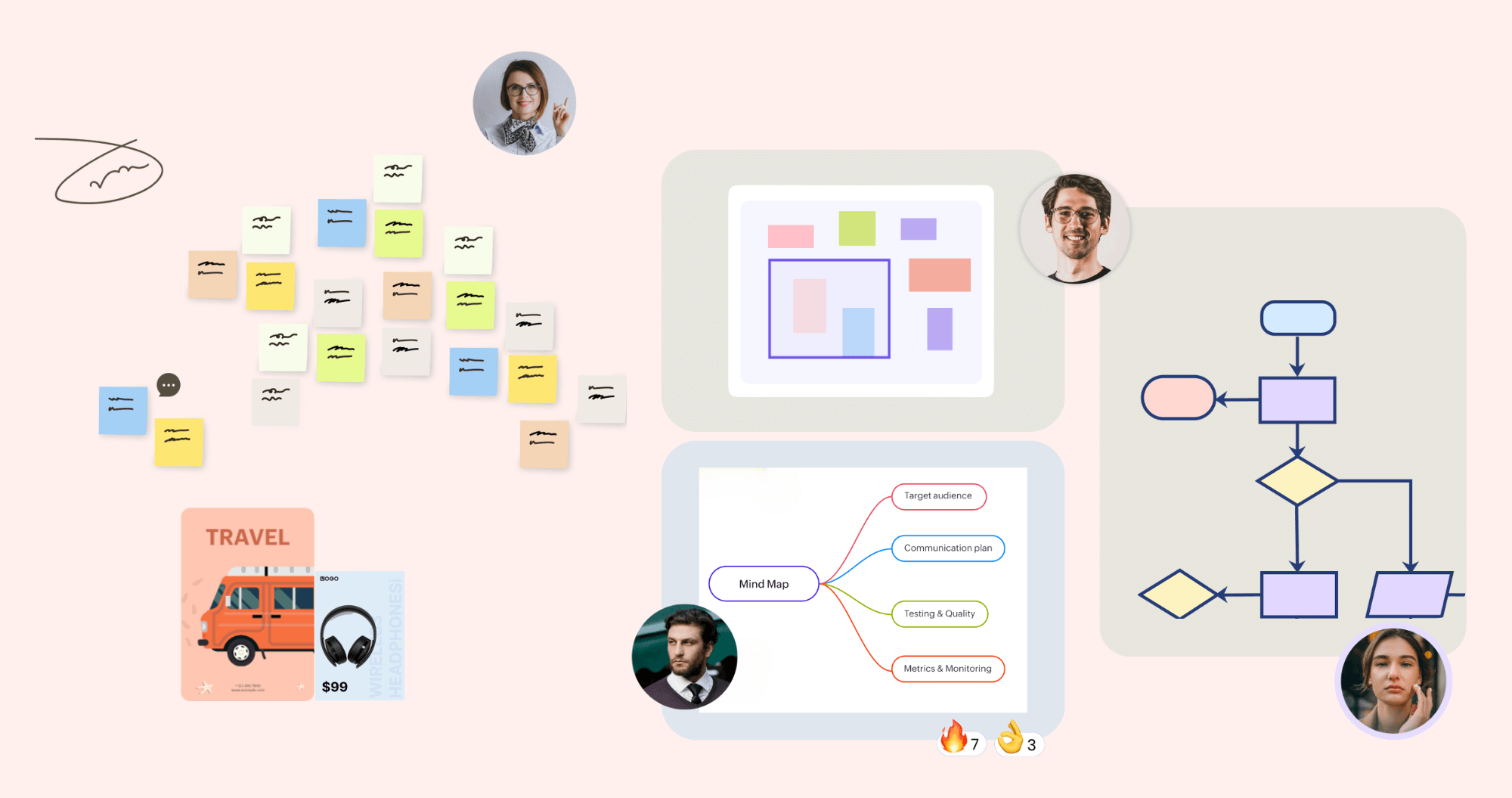
So why not see what visual collaboration feels like with Vani?
Vani is an all-in-one, shared visual intelligence collaboration platform (whiteboards, flow charts, diagrams, mind maps, video calls, and more) that empowers teams to brainstorm, plan, and innovate together on a shared infinite canvas. Teams don't need more tools when they have Vani; they have clarity that helps them think better, move faster, and work smarter.
Ready to make teamwork more visual, more connected, and more effective?
Start your journey with Vani today and bring your ideas to life, together.

